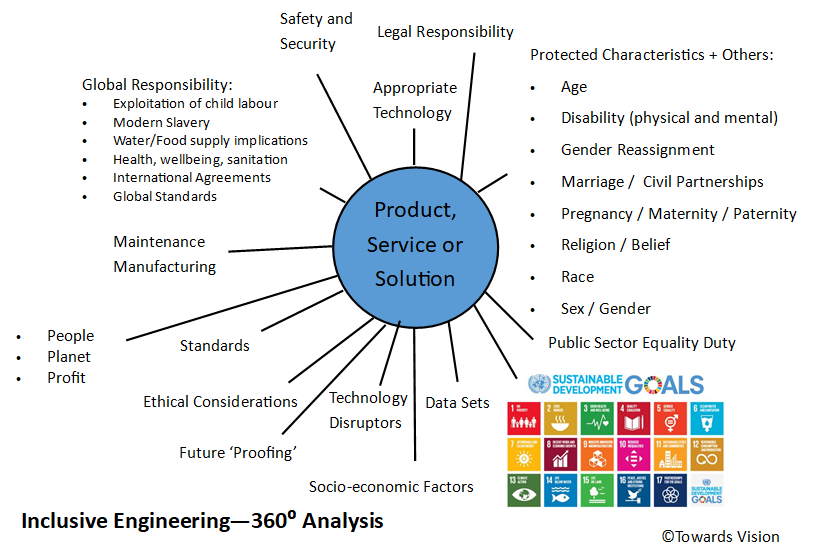Principles for Human Centred Design
Inclusive Engineering is a competence that allows engineers to ensure that their work is inclusive of and accessible to everybody. It is a methodology to ensure that engineering products and services have been designed with 360degree visibility, and that the needs and requirements of all users – both now and in the future - have been considered. It takes into account traditionally under-represented groups, ensuring that data sets which have been used to inform design are complete and non-biased, and that these groups are represented in the design process, as well as considering the manufacturers, maintainers and users of the finished product or service. It ensures that technology is appropriate for its environment, and that it is produced ethically and with global and social responsibility in mind.
Principles of Inclusive Engineering
The following human centred design principles should be used when designing inclusively.
- Consider the design from all users’ perspectives. A 360 degree analysis will ensure that all angles have been considered
- Ensure that all users have equitable access to the finished product or service
- Ensure that the information used to inform the design is not biased or limited
- Ensure that the design does not inadvertently discriminate against certain groups of people, either now or in the future
- Ensure that the design is culturally appropriate, maintainable and locally sustainable
- Ensure that the design does not promulgate bias or discrimination, or promote inequality
- Consider how the design can increase equality
- Build choice and flexibility into the design to allow users to adapt it to their own diverse needs
- Ensure that the design team is inclusive and accessible to all influencers
- Ensure that decisions made at any one stage of the life of the product or service do not result in bias or inequality at a later stage
Copyright Dawn Bonfield, Towards Vision

